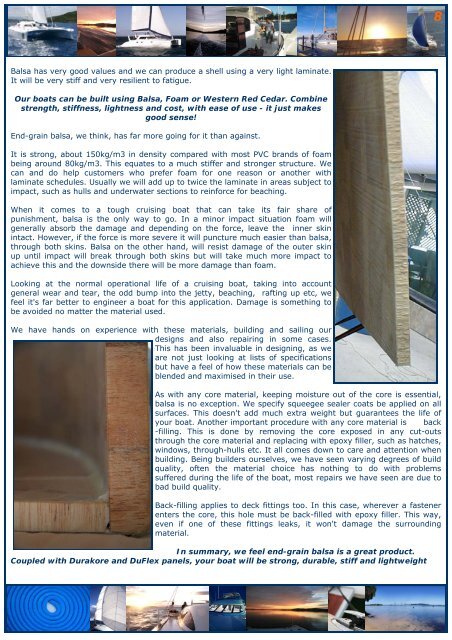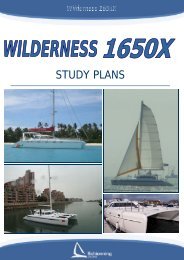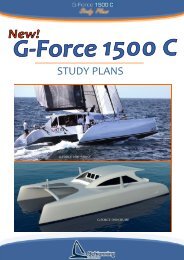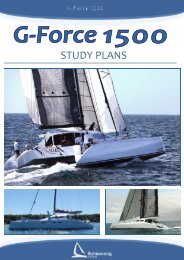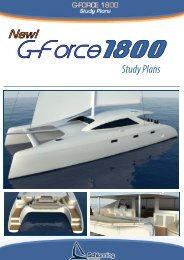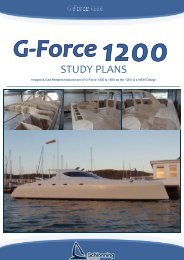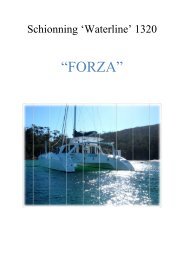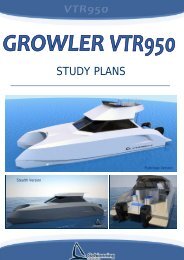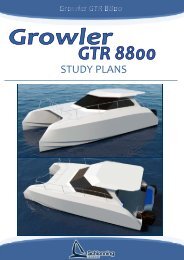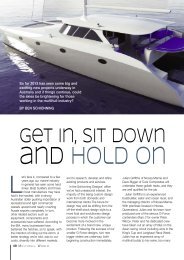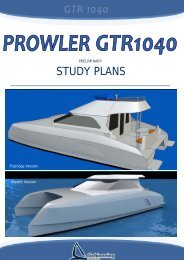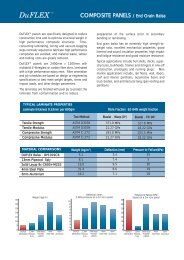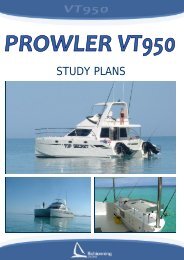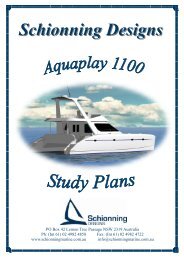Study Plans - Schionning Designs
Study Plans - Schionning Designs
Study Plans - Schionning Designs
- No tags were found...
You also want an ePaper? Increase the reach of your titles
YUMPU automatically turns print PDFs into web optimized ePapers that Google loves.
8Balsa has very good values and we can produce a shell using a very light laminate.It will be very stiff and very resilient to fatigue.Our boats can be built using Balsa, Foam or Western Red Cedar. Combinestrength, stiffness, lightness and cost, with ease of use - it just makesgood sense!End-grain balsa, we think, has far more going for it than against.It is strong, about 150kg/m3 in density compared with most PVC brands of foambeing around 80kg/m3. This equates to a much stiffer and stronger structure. Wecan and do help customers who prefer foam for one reason or another withlaminate schedules. Usually we will add up to twice the laminate in areas subject toimpact, such as hulls and underwater sections to reinforce for beaching.When it comes to a tough cruising boat that can take its fair share ofpunishment, balsa is the only way to go. In a minor impact situation foam willgenerally absorb the damage and depending on the force, leave the inner skinintact. However, if the force is more severe it will puncture much easier than balsa,through both skins. Balsa on the other hand, will resist damage of the outer skinup until impact will break through both skins but will take much more impact toachieve this and the downside there will be more damage than foam.Looking at the normal operational life of a cruising boat, taking into accountgeneral wear and tear, the odd bump into the jetty, beaching, rafting up etc, wefeel it's far better to engineer a boat for this application. Damage is something tobe avoided no matter the material used.We have hands on experience with these materials, building and sailing ourdesigns and also repairing in some cases.This has been invaluable in designing, as weare not just looking at lists of specificationsbut have a feel of how these materials can beblended and maximised in their use.As with any core material, keeping moisture out of the core is essential,balsa is no exception. We specify squeegee sealer coats be applied on allsurfaces. This doesn't add much extra weight but guarantees the life ofyour boat. Another important procedure with any core material is back-filling. This is done by removing the core exposed in any cut-outsthrough the core material and replacing with epoxy filler, such as hatches,windows, through-hulls etc. It all comes down to care and attention whenbuilding. Being builders ourselves, we have seen varying degrees of buildquality, often the material choice has nothing to do with problemssuffered during the life of the boat, most repairs we have seen are due tobad build quality.Back-filling applies to deck fittings too. In this case, wherever a fastenerenters the core, this hole must be back-filled with epoxy filler. This way,even if one of these fittings leaks, it won't damage the surroundingmaterial.In summary, we feel end-grain balsa is a great product.Coupled with Durakore and DuFlex panels, your boat will be strong, durable, stiff and lightweight


